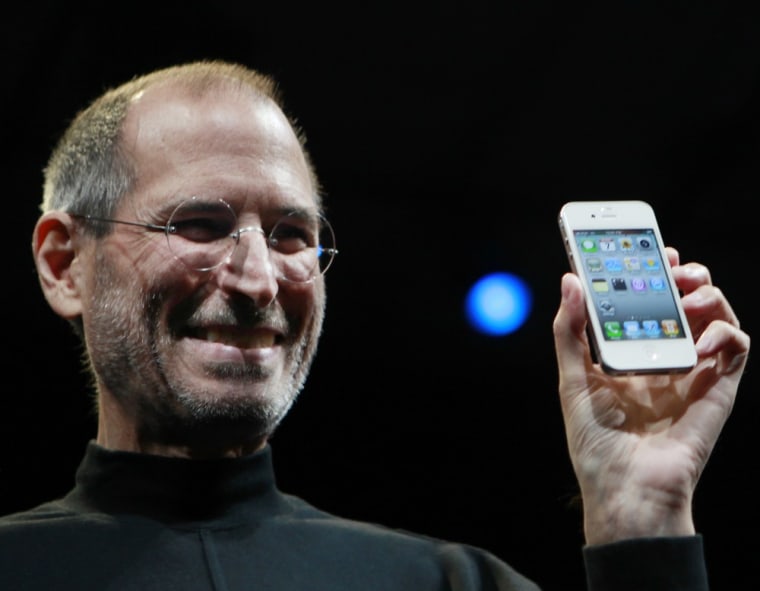Bars, schmars; possible antenna woes, be damned. Consumer Reports has given the iPhone 4 a pass and a "get out of jail" card: The highly regarded publication says while holding the new iPhone "in certain ways does cause signal loss," that's true for "all cell phones."
"All phones are subject to interference from the human who is using them," wrote Mike Gikas on Consumer Reports' electronics blog. "And even if the alleged signal loss is real, there's an absence of hard evidence that iPhone 4 reception is problematic compared to past iPhones; indeed, there's evidence of just the opposite."
Holding the iPhone 4 "in certain ways does cause signal loss," he wrote. "But that's the case with all cell phones. Indeed, all cell phones, from the mightiest smart phones to the most-basic flip models, must consistently overcome a major communication obstacle: you.
"Your hand, your head, or any other part of your body that comes between the phone's antenna and the nearest cell tower will interfere with reception, and devilishly well. That's in part because humans are mostly made of water, and water is very good at blocking phone signals. Other confounding factors include nearby buildings, cell-tower location, and even the weather.
"That interference is exacerbated if the phone's antenna is not insulated from human contact. And that seems to be the case with the iPhone's external antenna, which doubles as the phone's stylish metal outer band; your hand contacts the band as you cradle the phone."
"I'm not a cell phone engineer but those who are tell me it's not an uncommon issue," said Michael Gartenberg, longtime technology observer, analyst and partner at the Altimeter Group.
"Many phones come with stickers saying not to touch phones in certain places. Other phones like the Nexus One have also had similar issues discussed, albeit not as vocally or as widely covered."
Msnbc.com's deputy technology and science editor Wilson Rothman, who has the new iPhone, wrote earlier this week: "I've had the iPhone 4 since last Friday, and the reception isn't great. In fact, it reminds me an awful lot of my last three iPhones. So why all the sudden fuss?
"Crowding your hand around the bottom of any previous iPhone was enough to cause it to lose reception and drop calls too," he wrote. "In fact, I've been very conscious of causing reception loss by wrapping my hand around any cell phone with a bottom antenna since I used a Motorola RAZR (on Verizon Wireless)."
The iPhone 4 reception issue/antenna kerfuffle started almost immediately after the phone went on sale June 24. In the first three days, Apple sold 1.7 million of them.
Apple CEO Steve Jobs snarled that users who are complaining need to learn how to hold the phone correctly, avoiding holding it at the lower left corner, which will block the antenna that encircles the phone's outer edge completely.
A class-action lawsuit has been filed against Apple and AT&T, exclusive carrier of the iPhone in the United States, over the iPhone 4's antenna reception.
Meanwhile on Friday, Apple surprised many with a "Letter from Apple Regarding iPhone 4" on its website, saying the company was "stunned" to find that since the iPhone first came out in 2007, Apple has been using a "totally wrong" formula to determine how many bars of signal strength the phones get. Apple promised a "free software update within a few weeks that incorporates the corrected formula."
Fortune magazine gave readers a detailed diagram on the iPhone 4's "lost bars," and the problems tied to even trying to map signal strength to the bars that show up on the phone screen.
Relax, says Consumer Reports. The bottom line? "There's no reason, at least yet, to forgo buying an iPhone 4 over its reception concerns. And even if those do materialize, Apple's Steve Jobs helpfully reminds new iPhone buyers that 'you can return your undamaged iPhone to any Apple Retail Store or the online Apple Store within 30 days of purchase for a full refund.'"
